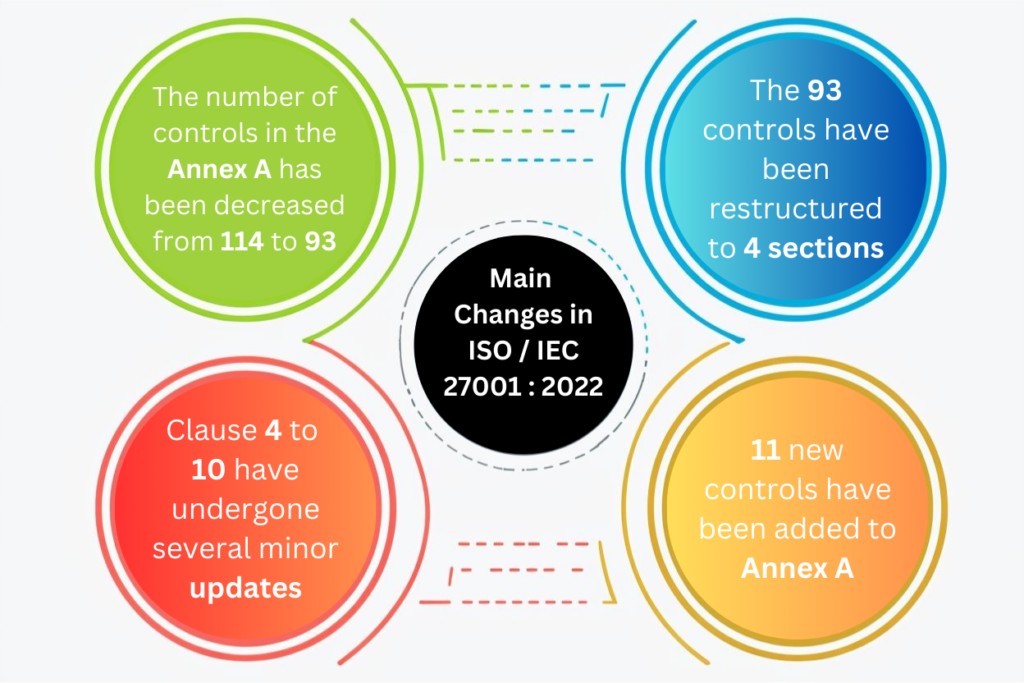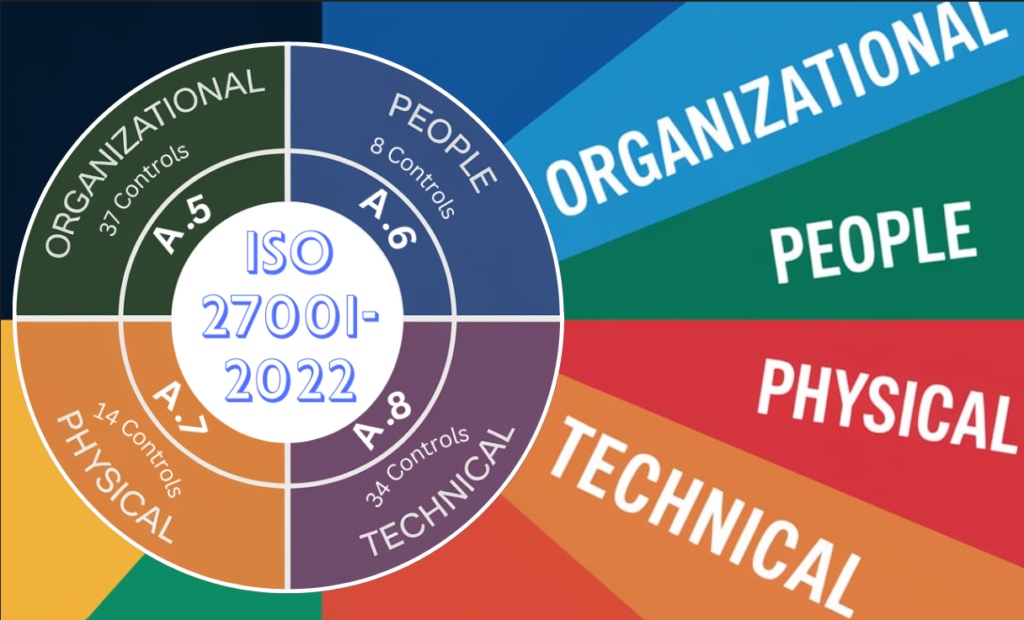In today’s rapidly evolving digital landscape, achieving ISO 27001 compliance is no longer optional—it’s a business imperative. With the release of ISO 27001:2022 update, the gold standard for information security management systems (ISMS) takes a bold step forward. This new framework not only addresses the challenges of modern cybersecurity but also equips organizations with the tools to safeguard their assets, people, and reputation.
Whether you’re new to ISO 27001 or an experienced practitioner, this blog will guide you through the key updates, why they matter, and how your organization can adapt seamlessly.
ISO 27001:2022– What You Need to Know
ISO 27001:2022 is the latest iteration of the globally recognized standard for managing information security. It provides a comprehensive framework to identify, manage, and mitigate risks related to data breaches, cyberattacks, and other security threats. The update reflects a growing emphasis on proactive security measures, resilience, and streamlined management practices.
This standard is designed to align with evolving technologies, business needs, and global threats, making it a critical component of any organization’s security strategy.
Why ISO 27001:2022 Matters for Modern Cybersecurity?
The world has changed significantly since the 2013 version of ISO 27001 compliance. Cyber threats have become more sophisticated, supply chains more complex, and the regulatory landscape more demanding. ISO 27001:2022 transition roadmap addresses these challenges with:
- Improved risk management practices
- Enhanced governance for information security
- Stronger focus on cybersecurity and resilience
- Expanded emphasis on supply chain security
In short, this update ensures the standard remains relevant, practical, and effective in today’s fast-paced world.
Key Highlights: What’s New in ISO 27001:2022?
The updates in ISO 27001:2022 go beyond mere tweaks—they represent a significant evolution. Here’s what you need to know:
Alignment with the High-Level Structure (HLS)
The new standard adopts the HLS, making it easier to integrate with other ISO standards like ISO 9001 (Quality Management) and ISO 22301 (Business Continuity). This streamlines implementation and promotes consistency across systems.
Broader Risk Management Scope
ISO 27001:2022 expands risk management to include identification, assessment, treatment, and continuous monitoring. The shift emphasizes proactive approaches, ensuring organizations remain ahead of emerging threats.
Focus on Governance
Stronger emphasis is placed on roles, responsibilities, and alignment with organizational goals, ensuring top-down accountability for information security.
Cybersecurity and Resilience
With cyberattacks on the rise, the new standard introduces updated controls for threat intelligence, secure engineering, and incident recovery. Organizations can now build resilience into their DNA.
Supply Chain Security
The spotlight on supply chain risks reflects today’s interconnected business world. Organizations are encouraged to assess and manage risks from third-party vendors and suppliers.
Revamped Annex A Controls
Annex A, the heart of ISO 27001, sees a shift from 14 control groups with 114 controls to 4 themes with 93 controls:
- Organizational
- People
- Physical
- Technical
This restructuring improves clarity and efficiency, making it easier to implement.
Real-World Example
Organizations across industries face evolving cybersecurity threats daily. For instance, imagine a financial institution managing sensitive customer data and partnering with third-party vendors for IT support. Without proper oversight, a vulnerability in a vendor’s system could expose the entire organization to a data breach.
By adopting ISO 27001:2022, this firm can proactively identify and address such risks. Enhanced supply chain security measures and updated controls in Annex A ensure that third-party vendors meet stringent cybersecurity standards. As a result, the institution safeguards its data, builds trust with customers, and avoids costly reputational damage.
How Can You Transition to ISO 27001:2022?
Transitioning to a new standard might seem daunting, but with a clear roadmap, it’s entirely manageable. Make it happen by following these steps:
- Conduct a Gap Analysis
Assess where your current ISMS stands compared to the new requirements. Identify areas for improvement. - Engage Stakeholders
Get buy-in from leadership and teams by communicating the value of ISO 27001:2022. - Update Documentation
Align policies, procedures, and records with the new standard. - Provide Training
Equip employees with the knowledge and skills to understand and implement the changes. - Collaborate with Experts
Work with experienced consultants or auditors to ensure a smooth transition.
Conducting regular security audits and penetration testing is crucial for identifying vulnerabilities and ensuring your systems align with ISO 27001 requirements. Learn more in our blog on ‘The Importance of Regular Security Audits and Penetration Testing.’
Top Benefits of ISO 27001:2022 Certification
Achieving ISO 27001:2022 certification is more than a badge of honor—it’s a strategic investment. Here’s how your organization can benefit:
- Enhanced Security: Stay ahead of cyber threats with a proactive approach.
- Customer Trust: Protect sensitive data by demonstrating your commitment.
- Regulatory Compliance: Meet the requirements of GDPR, HIPAA, PCIDSS and other regulations.
- Competitive Advantage: Stand out in the marketplace with globally recognized certification.
- Operational Resilience: Build robust systems that can withstand and recover from disruptions.
Looking for Expert Guidance?
Navigating ISO 27001:2022 can be complex, but you don’t have to do it alone. At Apprise Cyber, we specialize in ISO 27001 advisory and certification services. From gap analysis to training and implementation, we’ll guide you every step of the way.
Contact Apprise Cyber today and embark on your ISO 27001 compliance journey. Secure your systems now—before the next cyber threat strikes!




